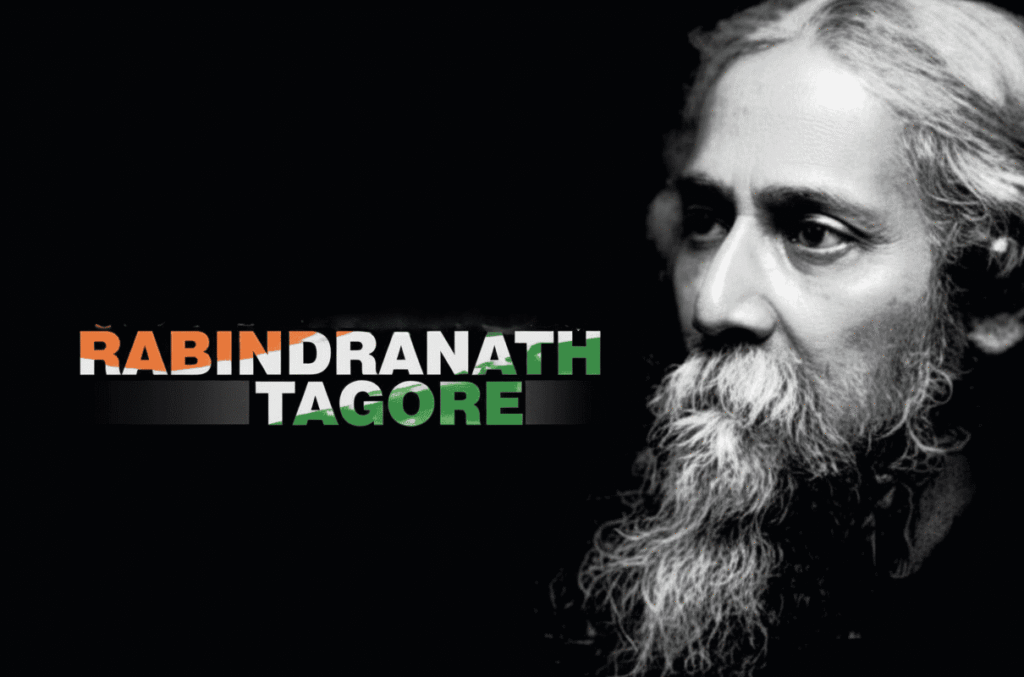Trending

Rabindranath Tagore’s birth anniversary commemorates the rich legacy of an iconic figure in Indian literature, music, and art. Tagore’s contributions demonstrate a profound understanding of people, beauty, and creativity. His poetry, music, and paintings expressed emotional depth and spiritual understanding, resulting in a timeless symphony of words, melodies, and colours.
The aim of this article is to look at Tagore’s work as a unique fusion of literature, music, and art. It emphasises how his works pushed traditional bounds to represent the significance of life, the human spirit, and the pursuit of freedom. Through this tribute, we consider the enduring inspiration derived from his varied genius.
Rabindranath Tagore was an amazing personality in Indian literature who used poetry to portray human emotions, philosophy, and socioeconomic realities. His poetry and brief writings were profoundly moving and thought-provoking. In 1913, his famous poetry work Gitanjali was awarded the Nobel Prize, a momentous milestone. In this book, he explored the mysteries of life, divinity, and humanity, expressing a deep spiritual and loving oneness. His creative power prompted people to think differently, and his words captured India’s cultural and spiritual sensibilities.
His literary contributions extended beyond poetry, as he added clarity, style, and compassion to short stories and novels as well. In his articles and story collections, the reader is encouraged to reflect on incidents from their own lives. Stories like Kabuliwala, The Postmaster, Gora, and Ghare Baire not only illustrate Indian society, but also delve into the human mind and the quest for the soul. His writing added a new dimension to Indian literature by combining social and religious awareness, individualism, and liberal thinking. He skilfully combined various kinds of art into his work, and each poem, tale, play, or novel provided readers with a fresh perspective.
Rabindranath Tagore’s music contributed a distinct richness to the world of Indian music. He wrote almost 2,300 songs in the form of Rabindrasangeet, a stunning blend of Indian classical music, folk traditions, personal reflection, and Western musical influences. His songs sensitively depicted loyalty, love of nature, patriotism, human connections, and the full spectrum of life’s emotions. Amar Shonar Bangla and Jana Gana Mana, two national anthems, arose from this creative approach. Rabindrasangeet is distinguished by its effortlessly lovely melodies, profound lyrics, and expressive language, all of which speak straight to the listener’s heart.
Tagore saw music not just as a form of creative expression, but also as a tool for spiritual freedom and human unity. He freed music from its rigorous traditional constraints, giving it a new structure and incorporating new ideas and meanings into his songs. Thus, Rabindrasangeet is more than just a musical genre; it is a train of thinking that combines beauty, discipline, and human values. Even now, the purity of his music captivates audiences in India, and all around the world.
Rabindranath Tagore was not only a famous poet and writer, but also a gifted painter. His enthusiasm and creativity in painting were as deep and emotional as his writing. He used colour, lines, and symbols to create distinct portrayals of life, nature, and human emotions. His paintings fused traditional Indian art with modern and symbolic techniques, giving them a distinct and unique quality. His paintings used a range of hues to portray flows of emotion and thinking, and each picture presented life’s secrets, hardships, and beauty from a unique perspective.
Tagore’s use of colour in his paintings added psychological and spiritual depth to his work. His use of colour was not just for aesthetic purposes, but also to communicate the mysteries of the soul, emotion, and mental processes. His paintings established a magnificent interaction between sentiments and colours, which continues to captivate art enthusiasts today. As a result, Rabindranath Tagore’s paintings are more than just art; they are an experience, a mental process, and a spiritual journey.
Rabindranath Tagore’s art skilfully integrated poetry, music, and painting to investigate the deeper truths of human life. His paintings embodied emotional depth and spiritual understanding, depicting the depths of love, beauty, and hardship. Even now, his works continue to inspire people to go deep and ponder on life’s myriad facets through the prism of creativity and emotion.
This is a reflection provided by Adv. Abdul Mulla, who frequently writes about the philosophical and humanistic aspects of law and society. His platforms, www.lifeandlaw.in and www.asmlegalservices.in , provide a relevant intersection of art, ideas, and legal expertise.
Adv. Abdul Mulla (Mob. No. 937 007 2022) is a seasoned legal professional with over 18 years of experience in advocacy, specializing in diverse areas of law, including Real Estate and Property Law, Matrimonial and Divorce Matters, Litigation and Dispute Resolution, and Will and Succession Planning. read more….
Copyright BlazeThemes. 2025